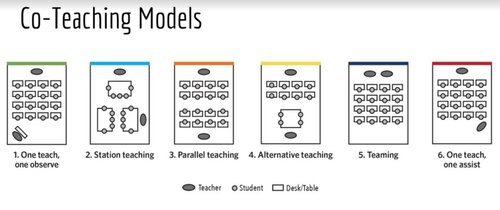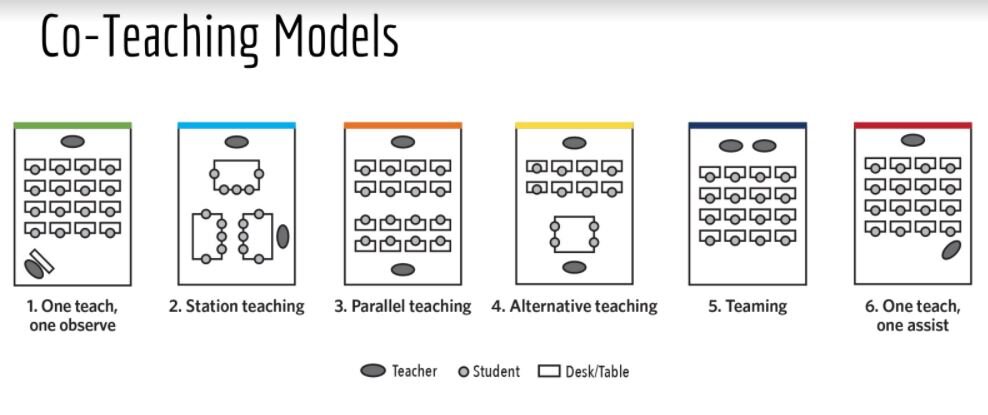Collaboration: Part 2 - The Path to Implementation
by Brianne McGee
This is part two in the collaboration series by Brianne McGee; read Part 1 here
The term “collaboration” has become a buzz-word within the education field throughout the last couple of years. School districts have spent both time and money creating professional development opportunities around this topic. Educators are now consistently being asked about the importance of collaboration during job interviews. Administrators are constantly looking for ways to incorporate collaboration into staff meetings and/or planning sessions. And yet, despite all these efforts, collaboration is not being effectively implemented on a day-to-day basis within schools.
The concept of collaboration seems simple enough, but it is actually quite complex. Bronstein (2003) defines collaboration as an interpersonal process through which members of different disciplines contribute to a common product or goal” (p. 298). This definition sparks a wide-variety of questions amongst educators such as…
Who should I be collaborating with?
Does it have to be a member of a different discipline?
Does the common product or goal stay the same?
How does one decide upon a common product or goal?
These are just a few of the questions that came to my mind as I read Bronstein’s definition of collaboration. As I previously mentioned, the concept of collaboration seems simple enough, but through experience most of us learn that it is quite complex.
Every educator collaborates for a different reason; however, one reason that should encourage all of us to collaborate is the growing number of ELL students within our schools as well as the need to support other groups of students like those with Special Education needs. The National Center for Education Statistics (2019) states that in 2016 the percentage of ELL students within the United States was approximately 9.6% or 4.8 million students. This number has without a doubt increased over the past three years. Despite these growing numbers, only “2.5 percent of teachers who educate English Language Learners possess a degree in ESL or bilingual education” and “only 12.5 percent have participated in 8+ hours of professional development” (McKeon, D. 2005). These numbers highlight the need for collaboration within schools. It is imperative that general education teachers begin working with ESL teachers to improve the education that ELL students are receiving on a day-to-day basis.
Administrators can increase the amount of collaboration amongst their staff by implementing co-teaching. Cook and Friend (1995) defined co-teaching as “two or more professionals delivering substantive instruction to a diverse or blended group of students in a single physical space” (as cited in Murawski and Swanson, 2001, p. 258). This definition, although completely accurate, does not help educators understand how to effectively implement co-teaching into their classroom. Over the past decade, research has found that educators can implement co-teaching in a variety of different ways depending upon the needs of the students. The chart below depicts a few of the most common ways co-teaching is utilized.
Co-Teaching Models
(Friend, Cook, Hurley-Chamberlain, & Shamberger, 2010, p. 12)
(Honigsfeld and Dove, 2010)
Station Teaching: Station teaching is where instruction is divided into three parts. The students rotate from station to station. The first two stations are taught by the collaboration teachers, whereas the third station requires the students to work independently.
Parallel Teaching: Parallel teaching is where the two teachers, each with half of the class, present the same material for the primary purpose of instructional differentiation.
Alternative Teaching: Alternative teaching is where one teacher works with most of the class, while the other works with a small group for remediation, enrichment, assessment, or pre-teaching.
Team Teaching: Team teaching is where both teachers lead large-group instruction by either lecturing, representing opposing views in a debate, and/or illustrating two ways to solve a problem.
One Teaching /One Assisting: This type of co-teaching revolves around one teacher leading the instruction, while the other circulates among the students to offer individual assistance.
These co-teaching models have been proven to benefit all students; however, research has found that this type of collaboration especially benefits ESL students. Rummel (2015) states co-teaching is essential for ESL students because it “affords students educational experiences that simultaneously and purposefully foster content and language development” (as cited in Honigsfeld & Dove, 2015, p. 114). This is why Honigsfeld and Dove (2015) firmly believe that “collaboration is the key to building bright student futures”. Read more tips for co-teaching and collaboration here.
Consistent collaboration with the ESL teacher at your school can provide your ESL students the opportunity to increase their understanding of academic content and improve their use of the English language. Simply spending 30 minutes a week collaborating with the ESL teacher at your school can make a world of difference, because they will be able to provide you with tips/tricks to make your lessons even more effective. Just remember that before your planning session with the ESL teacher, you should determine what the common product/goal of this collaborative effort will be.
Do you want to learn how to effectively implement hand signals into the lesson?
Do you want to learn how to use pictures to increase student comprehension?
Do you want to learn Spanish cognates to improve your students' understanding of the academic vocabulary?
No matter what common product/goal you decide on just remember effective collaboration requires effort, but if you devote the time and energy to collaborating with the ESL teacher at your school eventually you will see an improvement in your students' understanding of the academic content and the English language.
Citations
Bronstein, L. (2003). A Model for Interdisciplinary Collaboration. Social Work, 48(3), 297-306. Retrieved from https://doi.org/10.1093/sw/48.3.297
English Language Learners in Public Schools (2019). National Center for Education Statistics. Retrieved from https://nces.ed.gov/programs/coe/pdf/2022/cgf_508.pdf
Friend, M., Cook, L., Hurley-Chamberlain, D., & Shamberger, C. (2010). Co-teaching: An Illustration of the Complexity of Collaboration in Special Education. Journal of Educational and Psychological Consultation, 20(1), 9-27.
Honigsfeld, A. & Dove, M.G. (2015). Collaboration and Co-Teaching for English Learners: A Leader's Guide. Thousand Oaks: Corwin.
McKeon, D. (2005). Research Talking Points on English Language Learners. National Education Association. Retrieved from http://www.nea/org/home/13598.htm
Murawski, W. & Swanson, H. (2001). A Meta-Analysis of Co-Teaching Research: Where is the Data?. Remedial and Special Education, 22(5), 258-267.


